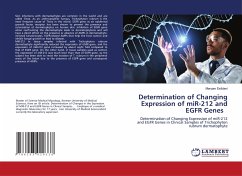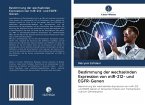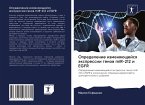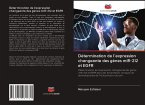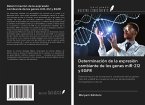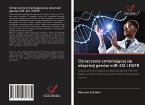Skin infections with dermatophytes are common in the world and are called Tinea. As an anthropophilic fungus, Trichophyton rubrum is the most frequent cause of Tinea in the world. EGFR gene as an epidermal growth factor receptor has been shown to prevent the presence and colonization of dermatophytes on human skin. Inhibition of EGFR gene when confronting the dermatophyte leads to dermatophytosis and will have a direct effect on the presence or absence of AMPs in dermatophyte-infected keratinocytes. EGFR-related AMPs that help the host control and inhibit fungal growth or lead to disease. MiR-212 in tissue samples infected with Trichophyton rubrum dermatophyte significantly reduced the expression of EGFR gene, and the expression of miR-212 gene increased by about eight fold compared to that of EGFR gene. On the other hand, in tissue samples used as control, the expression of miR-212 was much less1 than that of EGFR gene, so the subject has been able to resist the invasion of T. rubrum in the peripheral areas of the lesion due to the presence of EGFR gene and consequent presence of AMPs.
Bitte wählen Sie Ihr Anliegen aus.
Rechnungen
Retourenschein anfordern
Bestellstatus
Storno

